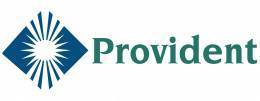Investment & Consolidation in the Oncology Practice Management Sector
Published December 2022
The prevailing investment thesis in the oncology practice management space, which is centered on favorable demographic trends and market fragmentation, continues to drive transaction activity and competition for independent practices in the sector. The fragmented marketplace, combined with an aging U.S. population, rising cancer case counts, and increased survivorship, has created a demand for services that more than outpaces the supply of providers.
There are more than 2,000+ oncology practices in the United States, with 76.0% of practices employing only one to five oncologists. Less than 5.0% of practices have over five clinic locations, with approximately 25.0% of practices having only two to five clinic locations.(1) Furthermore, cancer case counts continue to increase annually, with the total number of cases expected to almost double by 2050. Meanwhile, early career oncologists (less than 40 years old) represent less than 15.0% of all oncologists, with 20.0%+ of oncologist close to or at the retirement age of 65.
Despite low competition and attractive macro tailwinds, strategic add-on acquisitions dominated transaction activity with zero new platforms created over the last three years. In 2017 and 2018, 20.0% to 30.0% of acquisitions represented platform creations or other private equity buyouts, while from 2019 to 2021, private equity-backed add-on acquisitions represented 65.0%+ of transaction activity. Further emphasizing the rising prevalence of private equity-backed platforms and the resulting increase in competition for add-ons, in 2017, corporate-backed and public strategic acquirers represented 80.0% of deals, whereas corporate-backed and public strategics only represented 43.8% of activity in 2021.
Given the current transaction landscape and attractive market factors, we expect to see increased competition for add-on acquisitions among sponsors and strategic acquirers already invested in the space. Further, given the demand for services and a relatively low number of key platforms and strategic acquirers, we see the capacity for new platform investments looking to fill gaps in care across the United States.
Provident Healthcare Partners is an investment banking firm exclusively focused on advising healthcare companies through transactions. In this white paper, we examine consolidation drivers, emerging trends, and considerations for business owners looking to explore transaction options.
Whitepaper Summary:
- Introduction
- Surveying the Oncology Practice Management Landscape
- Consolidation Drivers
- Emerging Trends
- Considerations for Practice Owners & Operators
- Transaction Activity
- Conclusion
Provide your information below to access this document.
